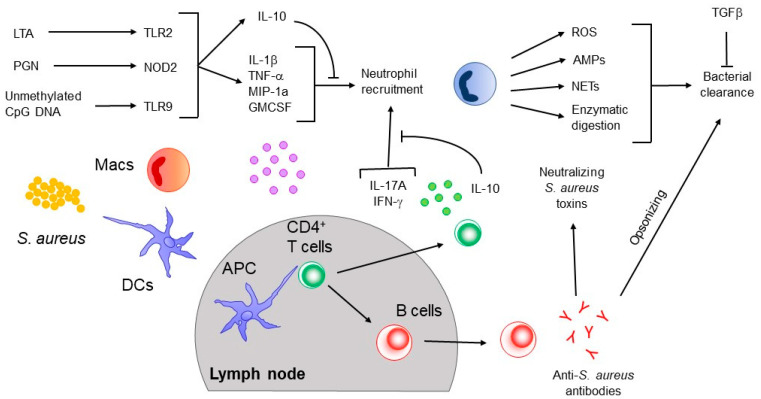Figure 1.
The immune response against S. aureus. Pattern recognition receptors (TLR2/NOD2/TLR9) expressed on innate immune cells such as macrophages (Mac) and dendritic cells (DC) at the infection site respond to S. aureus pathogen-related molecular patterns (LTA, peptidoglycan (PGN), and unmethylated CpG DNA). This interaction leads to the release of cytokines and chemokines (IL-1β, TNF-α, MIP-1α, and GM-CSF), which attracts neutrophils to the site of infection. Neutrophils mediate bacteria killing and clearance via reactive oxygen species (ROS), anti-microbial peptides (AMPs), neutrophil extracellular traps (NETs), and enzymatic digestion by hydrolases and proteinases. After interacting with S. aureus, Mac and DC can migrate to draining lymph nodes to present the antigen to naïve T cells. This interaction causes T cells to undergo functional differentiation, which culminates with the generation of IFNγ and IL-17-producing cells. IFNγ can activate Mac and DC to enhance antigen presentation (among other inflammatory functions). The expression of IL-17 facilitates neutrophil recruitment. The anti-inflammatory cytokines TGFβ and IL-10 can also be induced upon infection and could play both protective (limiting damage) or inhibitory (limiting immune response) roles, depending on the route of infection. Additionally, TFH cells could differentiate in response to the initial infection and could interact with B cells so as to foster the production of anti-staphylococcal antibodies that enable the opsonization of bacteria or neutralize staphylococcal toxins.

